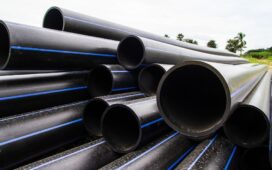In this case study, we delve into the successful implementation of energy optimization strategies by a Node.js development firm. Focused on reducing energy consumption in their infrastructure, the NodeJs Development Company aimed to achieve long-term cost savings, environmental sustainability, and enhanced operational efficiency.
Background:
Objective:
To identify and implement measures for optimizing energy consumption within the development company’s infrastructure.
To achieve cost savings while maintaining or improving operational efficiency.
Challenges:
Rising energy costs impacting operational expenses.
Environmental responsibility and the desire to contribute to sustainable practices.
Implementation:
1. Infrastructure Audit:
Conducted a comprehensive audit of the existing infrastructure to identify energy-intensive components and bottlenecks.
Assessed the energy efficiency of servers, networking equipment, and cooling systems.
2. Node.js Codebase Optimization:
Collaborated with development teams to optimize Node.js code for efficiency.
Implemented best practices for asynchronous programming and optimized resource utilization.
3. Server Consolidation and Virtualization:
Consolidated underutilized servers to reduce the overall energy footprint.
Implemented server virtualization to improve resource utilization and reduce the number of physical servers.
4. Energy-Efficient Hardware Upgrades:
Gradually upgraded hardware components to more energy-efficient models.
Invested in servers with advanced power management features to optimize energy consumption based on demand.
5. Cloud Resource Management:
Leveraged cloud services judiciously to scale resources dynamically based on demand.
Implemented automated scaling policies to ensure optimal resource allocation and energy efficiency.
6. Energy Monitoring and Reporting:
Deployed energy monitoring tools to continuously track and analyze energy consumption.
Generated regular reports to provide insights into energy usage patterns and identify further optimization opportunities.
Results:
1. Cost Savings:
Achieved a significant reduction in energy costs, resulting in substantial long-term savings.
Optimized infrastructure allowed the company to allocate resources more efficiently, preventing unnecessary expenses.
2. Improved Operational Efficiency:
Node.js codebase optimizations led to faster application performance and reduced server response times.
Enhanced infrastructure scalability and flexibility positively impacted development and deployment workflows.
3. Environmental Impact:
Contributed to environmental sustainability by lowering the company’s carbon footprint.
Demonstrated corporate responsibility and commitment to eco-friendly practices.
4. Employee Engagement:
Increased employee awareness and engagement in energy-saving practices.
Fostered a culture of responsibility towards resource utilization.
Future Steps:
- Continuous Monitoring and Optimization: Implement ongoing monitoring and optimization practices to adapt to changing energy efficiency trends and technology advancements.
- Integration of Renewable Energy Sources: Explore opportunities to integrate renewable energy sources into the company’s infrastructure to further reduce environmental impact.
- Industry Collaboration: Participate in industry collaborations and initiatives focused on sustainable and energy-efficient practices to stay informed about best practices.
Conclusion:
The Node.js development company’s commitment to optimizing energy consumption not only resulted in substantial cost savings but also showcased a dedication to environmental responsibility. By strategically implementing energy-efficient practices across their infrastructure and codebase, the company has set a precedent for sustainable and efficient operations, positioning itself for continued success in a rapidly evolving technological landscape.







